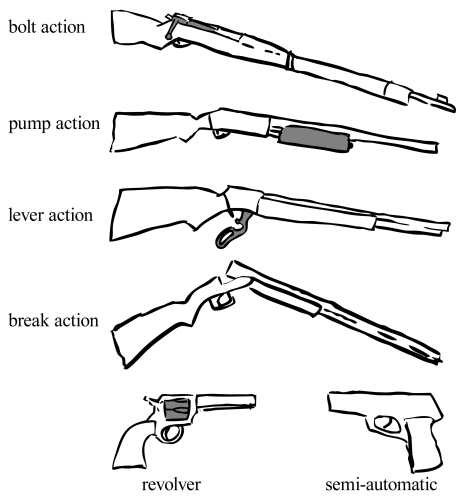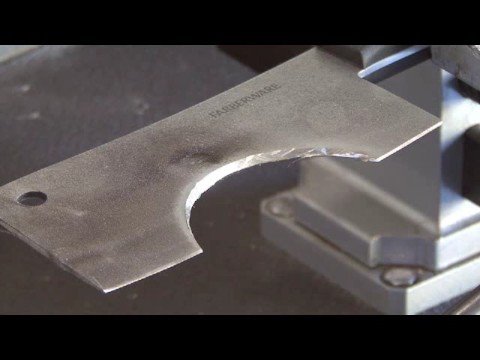This video is from a few years ago, but it’s always great to show off how to make a simple blood knife.
Friday Fun Links
Happy Friday, good props people!
Though a few years old, this tutorial on making paper clay is pretty useful. Paper clay is a great sculpting material if you are working with kids, or otherwise need a cheap and non-toxic medium.
I always enjoy when Lost Art Press posts 19th century texts about workmanship. This recent one on “Good Workmen and Good Tools” is such a post. Take care of your tools!
Designing a vinyl toy with Joe Ledbetter is a bit different than what most of us do. He steps us through the many procedures one goes through when one designs a vinyl toy and works with a factory to put it into production. It’s kind of fascinating.
Finally, if you want a video to zone out to today, check out this mesmerizing one of Philippe Faraut sculpting a human hand from clay.
How to Build a Giant Eagle
Hey kids! Remember, even though films are replacing more and more real objects with computer-generated imagery, you may still be asked to put a life-size replica of those objects in your local airport. Check out this video where Weta Workshop builds giant eagles for the Wellington Airport as part of a promotion for The Hobbit: The Desolation of Smaug.
Illustrated Firearm Actions
Let’s face it; guns are frequently found on stage, whether in straight plays, musicals, operas and even dance. The use of certain guns can instantly convey a lot of information about period, geography and even character.
If you are a gun novice, it can be helpful to learn some basic terminology and categories. Even if you cannot find the absolute perfect gun, you can at least be in the right ballpark and not have something wildly anachronistic or unrealistic on stage.
For the first bit of terminology, I’ve put together an illustration showing the most common actions of both long guns (rifles, shotguns and muskets) and handguns (or pistols). When a firearm is capable of holding more than one round of ammunition, it needs an action to clear the spent cartridge and load a new one in place. The following is by no means an exhaustive list of all actions, but you may never need to know any others unless you start delving into the more esoteric and unique firearms used throughout history.

Bolt action – To eject the cartridge and load another round, a small handle is manually lifted, pushed forward, pulled back and dropped down. Bolt actions are most commonly found on the M1903 Springfield, which was the standard infantry rifle for the US from 1903 through World War I, and is still used by drill teams and color guards today.
Pump action – This action is typically associated with shotguns; the handigrip is pumped back and forth to eject a cartridge and load another one. On rifles, it is sometimes called a “slide action”.
Lever action -Â Most famously used in Winchester rifles, which were used by Western settlers in the US in the late 19th century (ie, “The Wild West”). Lever action rifles remain popular for modern-day sportsmen and hunters.
Break-action – The weapon “breaks”, or hinges to expose the breech. When this happens, the spent cartridges are ejected, and new ammunition can be manually inserted. This action is universal in double-barrel shotguns, and can be found in various rifles and pistols as well.
Revolver – Most commonly found in handguns, though the rare revolver rifle can be found scattered throughout history. A revolving chamber holds several cartridges; when one bullet is fired, the chamber rotates to line the next cartridge up with the barrel.
Semi-automatic – A semi-automatic refers to any pistol or rifle which automatically ejects the spent cartridge and loads the next round of ammunition when the gun is fired (not to be confused with an automatic firearm, which continues firing as long as the trigger is pressed). Most modern firearms for military and law-enforcement are semi-automatic.
Valentine’s Day Links
Happy Friday, everyone! For those of you in my part of the country, I hope you survived the winter storm(s) alright. Whether you are back to work or still stuck in your house, here are some prop-related articles for your reading pleasure:
The ever-inspiring prop maker Ross MacDonald has a post on some of the period paper props he has made for HBO’s Boardwalk Empire over the past four years. His props are always well-researched and produced on vintage machines as close to how they were originally produced.
Collector’s Weekly has a great piece on the fifty year history of Easy-Bake Ovens. If you have never checked out their blog, this is a great piece to start on. Their stories are always a cut above the rest, filled with tons of great photographs, and delving into the history of various objects in great detail.
If you are interested in making props while spending barely any money on materials, check out the Cardboard Armory. As the name suggests, this blog details various armor and weapon projects built with little more than cardboard, hot glue and the occasional piece of PVC pipe.
Though directed at woodworkers, Popular Woodworking’s “Top 6 Ways to Become a Better Woodworker” is just as relevant to the prop maker. Ok, it’s actually five ways, since one of the ways is to read Popular Woodworking (though if you build prop furniture from wood, it’s a good magazine to check out).
Alpha Officium makes historically-accurate coins out of real metal. His website has some common coins like Florins and Groats, and he can also do custom orders if you need something more specific.



